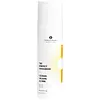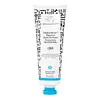What's inside
What's inside
 Key Ingredients
Key Ingredients

 Benefits
Benefits

 Concerns
Concerns

 Ingredients Side-by-side
Ingredients Side-by-side

Titanium Dioxide 6%
Cosmetic ColorantZinc Oxide 10%
Cosmetic ColorantAloe Barbadensis Leaf Juice
Skin ConditioningVitis Vinifera Seed Oil
EmollientOryza Sativa Bran Oil
EmollientGlycerin
HumectantCetearyl Olivate
Sorbitan Olivate
EmulsifyingIsoamyl Laurate
EmollientOlea Europaea Fruit Oil
MaskingGinkgo Biloba Meristem Cell
AntimicrobialCalendula Officinalis Flower
Skin ConditioningHippophae Rhamnoides Acid
EmollientCurcumin
AntioxidantCetearyl Alcohol
EmollientGlucose
HumectantLactoperoxidase
StabilisingHippophae Rhamnoides Oil
EmollientXanthan Gum
EmulsifyingMauritia Flexuosa Fruit Oil
Skin ConditioningBronzite Powder
Cosmetic ColorantCI 77492
Cosmetic ColorantPotassium Sorbate
PreservativeTapioca Starch
CI 77491
Cosmetic ColorantCI 77499
Cosmetic ColorantTitanium Dioxide 6%, Zinc Oxide 10%, Aloe Barbadensis Leaf Juice, Vitis Vinifera Seed Oil, Oryza Sativa Bran Oil, Glycerin, Cetearyl Olivate, Sorbitan Olivate, Isoamyl Laurate, Olea Europaea Fruit Oil, Ginkgo Biloba Meristem Cell, Calendula Officinalis Flower, Hippophae Rhamnoides Acid, Curcumin, Cetearyl Alcohol, Glucose, Lactoperoxidase, Hippophae Rhamnoides Oil, Xanthan Gum, Mauritia Flexuosa Fruit Oil, Bronzite Powder, CI 77492, Potassium Sorbate, Tapioca Starch, CI 77491, CI 77499
Zinc Oxide 20%
Cosmetic ColorantWater
Skin ConditioningCaprylic/Capric Triglyceride
MaskingDicaprylyl Carbonate
EmollientPentylene Glycol
Skin ConditioningGlycerin
HumectantSteareth-2
EmulsifyingPropanediol
SolventSteareth-21
CleansingPolyhydroxystearic Acid
EmulsifyingCetearyl Alcohol
EmollientSilica
AbrasiveSclerocarya Birrea Seed Oil
HumectantAloe Barbadensis Leaf Extract
EmollientChondrus Crispus Extract
Skin ConditioningHaematococcus Pluvialis Extract
AntioxidantHelianthus Annuus Sprout Extract
Skin ConditioningVitis Vinifera Juice Extract
AntioxidantHelianthus Annuus Seed Oil
EmollientSimmondsia Chinensis Seed Oil
EmollientRaspberry Seed Oil/Tocopheryl Succinate Aminopropanediol Esters
Skin ConditioningHydrolyzed Wheat Protein
Skin ConditioningTocopheryl Acetate
AntioxidantTocopherol
AntioxidantSea Water
HumectantAcetyl Glucosamine
Skin ConditioningCetearyl Glucoside
EmulsifyingSodium Stearoyl Glutamate
CleansingTetrahexyldecyl Ascorbate
AntioxidantGlycine
BufferingSucrose
HumectantLecithin
EmollientTriethoxycaprylylsilane
Xanthan Gum
EmulsifyingTrisodium Ethylenediamine Disuccinate
Caprylhydroxamic Acid
Caprylyl Glycol
EmollientPhenoxyethanol
PreservativeChlorphenesin
AntimicrobialSodium Dehydroacetate
PreservativeCI 77491
Cosmetic ColorantZinc Oxide 20%, Water, Caprylic/Capric Triglyceride, Dicaprylyl Carbonate, Pentylene Glycol, Glycerin, Steareth-2, Propanediol, Steareth-21, Polyhydroxystearic Acid, Cetearyl Alcohol, Silica, Sclerocarya Birrea Seed Oil, Aloe Barbadensis Leaf Extract, Chondrus Crispus Extract, Haematococcus Pluvialis Extract, Helianthus Annuus Sprout Extract, Vitis Vinifera Juice Extract, Helianthus Annuus Seed Oil, Simmondsia Chinensis Seed Oil, Raspberry Seed Oil/Tocopheryl Succinate Aminopropanediol Esters, Hydrolyzed Wheat Protein, Tocopheryl Acetate, Tocopherol, Sea Water, Acetyl Glucosamine, Cetearyl Glucoside, Sodium Stearoyl Glutamate, Tetrahexyldecyl Ascorbate, Glycine, Sucrose, Lecithin, Triethoxycaprylylsilane, Xanthan Gum, Trisodium Ethylenediamine Disuccinate, Caprylhydroxamic Acid, Caprylyl Glycol, Phenoxyethanol, Chlorphenesin, Sodium Dehydroacetate, CI 77491
 Reviews
Reviews

Ingredients Explained
These ingredients are found in both products.
Ingredients higher up in an ingredient list are typically present in a larger amount.
Cetearyl alcohol is a mixture of two fatty alcohols: cetyl alcohol and stearyl alcohol. It is mainly used as an emulsifier. Emulsifiers help prevent the separation of oils and products. Due to its composition, it can also be used to thicken a product or help create foam.
Cetearyl alcohol is an emollient. Emollients help soothe and hydrate the skin by trapping moisture.
Studies show Cetearyl alcohol is non-toxic and non-irritating. The FDA allows products labeled "alcohol-free" to have fatty alcohols.
This ingredient is usually derived from plant oils such as palm, vegetable, or coconut oils. There is debate on whether this ingredient will cause acne.
Due to the fatty acid base, this ingredient may not be Malassezia folliculitis safe.
Learn more about Cetearyl AlcoholCi 77491 is also hydrated iron III oxide. It's sole purpose is to give a red/pink hue to products.
Iron III oxides are classified as inorganic chemicals for coloring.
Synthetically created Ci 77491 is considered safer than those naturally found. This is because the synthetically created version may contain less impurities. Iron oxides are generally non-toxic and non-allergenic.
Learn more about CI 77491Glycerin is already naturally found in your skin. It helps moisturize and protect your skin.
A study from 2016 found glycerin to be more effective as a humectant than AHAs and hyaluronic acid.
As a humectant, it helps the skin stay hydrated by pulling moisture to your skin. The low molecular weight of glycerin allows it to pull moisture into the deeper layers of your skin.
Hydrated skin improves your skin barrier; Your skin barrier helps protect against irritants and bacteria.
Glycerin has also been found to have antimicrobial and antiviral properties. Due to these properties, glycerin is often used in wound and burn treatments.
In cosmetics, glycerin is usually derived from plants such as soybean or palm. However, it can also be sourced from animals, such as tallow or animal fat.
This ingredient is organic, colorless, odorless, and non-toxic.
Glycerin is the name for this ingredient in American English. British English uses Glycerol/Glycerine.
Learn more about GlycerinXanthan gum is used as a stabilizer and thickener within cosmetic products. It helps give products a sticky, thick feeling - preventing them from being too runny.
On the technical side of things, xanthan gum is a polysaccharide - a combination consisting of multiple sugar molecules bonded together.
Xanthan gum is a pretty common and great ingredient. It is a natural, non-toxic, non-irritating ingredient that is also commonly used in food products.
Learn more about Xanthan GumZinc Oxide is a mineral broad-spectrum UV filter; it is the broadest UVA and UVB reflector approved by the FDA. It also has skin protectant and skin soothing properties.
Zinc oxide is one of the most effective broad-spectrum UV filters. It protects against UVB, UVAII, and UVAI. In comparison to its counterpart titanium dioxide, zinc oxide provides uniform and extended UVA protection.
Another great benefit? This ingredient is highly photostable so it won't degrade easily under sunlight.
A common myth is that mineral UV filters are widely believed to primarily reflect UV light.
However, modern research shows titanium dioxide absorbs UV radiation like chemical filters (~95% absorption & 5% reflection).
Zinc oxide has great skin soothing properties so you'll likely find this in sunscreens formulated for sensitive skin or babies/children. It is unlikely to cause "eye sting" like other sunscreen ingredients.
Regulatory agencies consider zinc oxide to be non-toxic and safe. It has also been shown to not penetrate the skin.
Unfortunately, this ingredient does leave a visible white cast. This is why mineral sunscreens are often less cosmetically elegant than chemical or hybrid ones.
In cosmetics, zinc oxide can be found in both non-nano and nano-sized forms. The nano version is used to reduce white cast and improve the texture of sunscreen formulas.
There are ongoing concerns surrounding nano-zinc oxide's impact on marine ecosystems and whether it can be absorbed into skin.
Regarding marine ecosystems and coral reefs, there is no conclusive evidence that any form of zinc oxide (or any other sunscreen ingredients) will cause harm. The science is still developing but many consumers are keeping a close eye on this issue.
Please note, many destinations have reef-safety sunscreen rules. For instance, the U.S. Virgin Islands advises all visitors to use non-nano mineral sunscreens.
There has also been some stir about whether micronized or nano zinc oxide has potential photoxicity and absorption through the skin/lungs.
An in-vitro (done in a test tube or petri dish) study demonstrated micronized zinc oxide to have potential phototoxicity. There's no need to fret; the EU Commission's Scientific Committee on Consumer Safety has stated, "The relevance of these findings needs to be clarified by appropriate investigations in vivo." Or in other words, further studies done on living organisms are needed to prove this.
Current research shows zinc oxide nanoparticles do not penetrate intact or sunburned skin. They either remain on the surface or in the outermost layer of dead skin (stratum corneum).
Zinc oxide is one of only two classified mineral UV filters with titanium dioxide being the other one.
Fun fact: Zinc has been used throughout history as an ingredient in paint and medicine. An Indian text from 500BC is believed to list zinc oxide as a salve for open wound. The Ancient Greek physician Dioscorides has also mentioned the use of zinc as an ointment in 1AD.
Learn more about Zinc Oxide